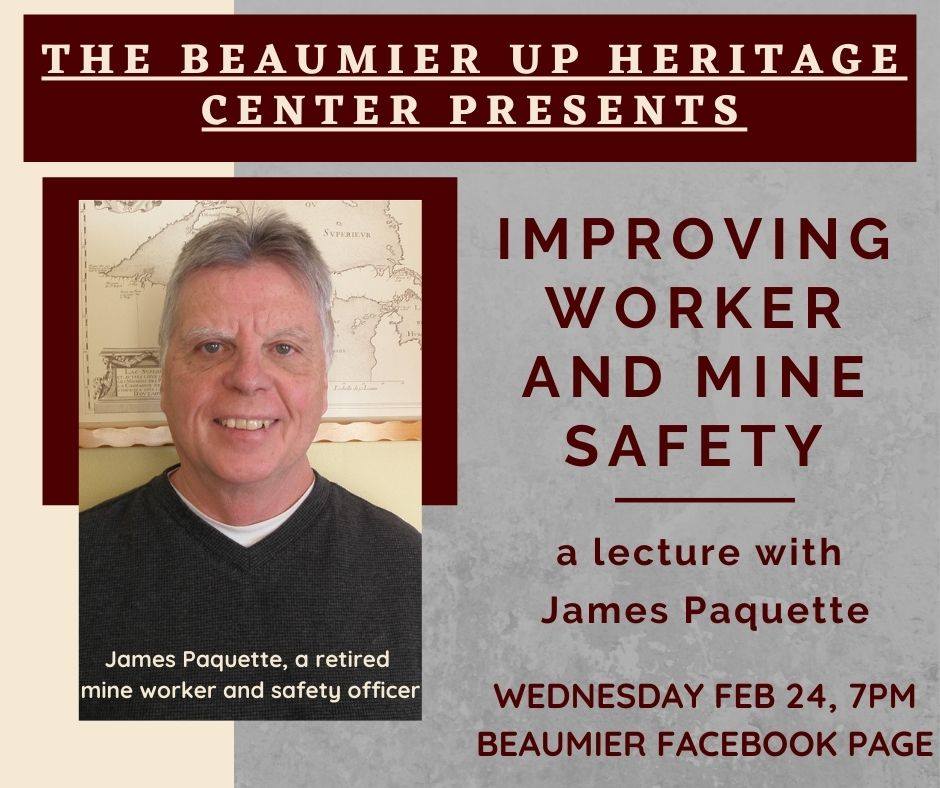On Wednesday, Feb. 24, James Paquette, former senior staff safety and health representative, gave a lecture about his work towards improving safety regulations during his time at Cliffs Michigan Mining Operations and Tilden and Empire Mines. Paquette’s lecture was part of the Beaumier Center’s current exhibition, Conflict and Resolve: Labor History of the Upper Peninsula.
Paquette’s lecture touched on many subjects, beginning with an explanation about how the history of unions related to mining.
“When you go back [into] the history of mining, it’s really a history of the people,” Paquette said. “People realized that they had to come together in order to protect each other. I think that philosophy of organizing people and coming together eventually led to unions.”
When asked what led to his position as a health representative, Paquette said that during his time at NMU, the school had a new program that was covering social services and it was something he wanted to do with his life.
“I was sort of an activist, so it was right up my alley to go there,” Paquette said.
Paquette was drawn to the mining business due to the promise of higher wages than those offered for entry-level social workers. When Paquette first entered the mine, he was struck by the conditions experienced by workers.
“Just about everything I saw every day was everything that I was taught to be against as a social worker,” Paquette said. “I watched people lose their fingers,”
After witnessing a death at the mine, Paquette said that the incident made an impression on him and showed just how serious and dangerous the job was during that time. Paquette was attracted to mine safety for the purpose of knowing that he would be able to protect people.
“That really, more than anything, was going to mean something to the people that worked there because that was going to protect people,” Paquette said. “That was [going to] protect them and get them home at the end of that shift to their families.”
Paquette worked on universally organizing mine safety for the first time at the mine.
“Everything we did as a union dramatically improved our safety record,” Paquette said.
He was later approached by the pit superintendent and offered a safety job at the corporate level. When debating the morals of taking a corporate job away from the union, Paquette recalled saying to himself, “if you, Jimmy Paquette, believe in everything you’ve been trying to do, if for seventeen years you’ve been battling this, they just offered you the Trojan horse and you can get on it and ride right inside.”
Paquette went on to lead a successful career at the corporate level, making some of the most statistically dangerous jobs significantly more safe, developing one of the first digital systems for the mine, and working to improve any other safety issues that he could. He also incorporated the Barnes-Hecker mining disaster of 1926 into his safety presentations to increase personal impact for those who were related to any victims.
For the full interview, visit Beaumier UP Heritage Center’s Facebook page.

























